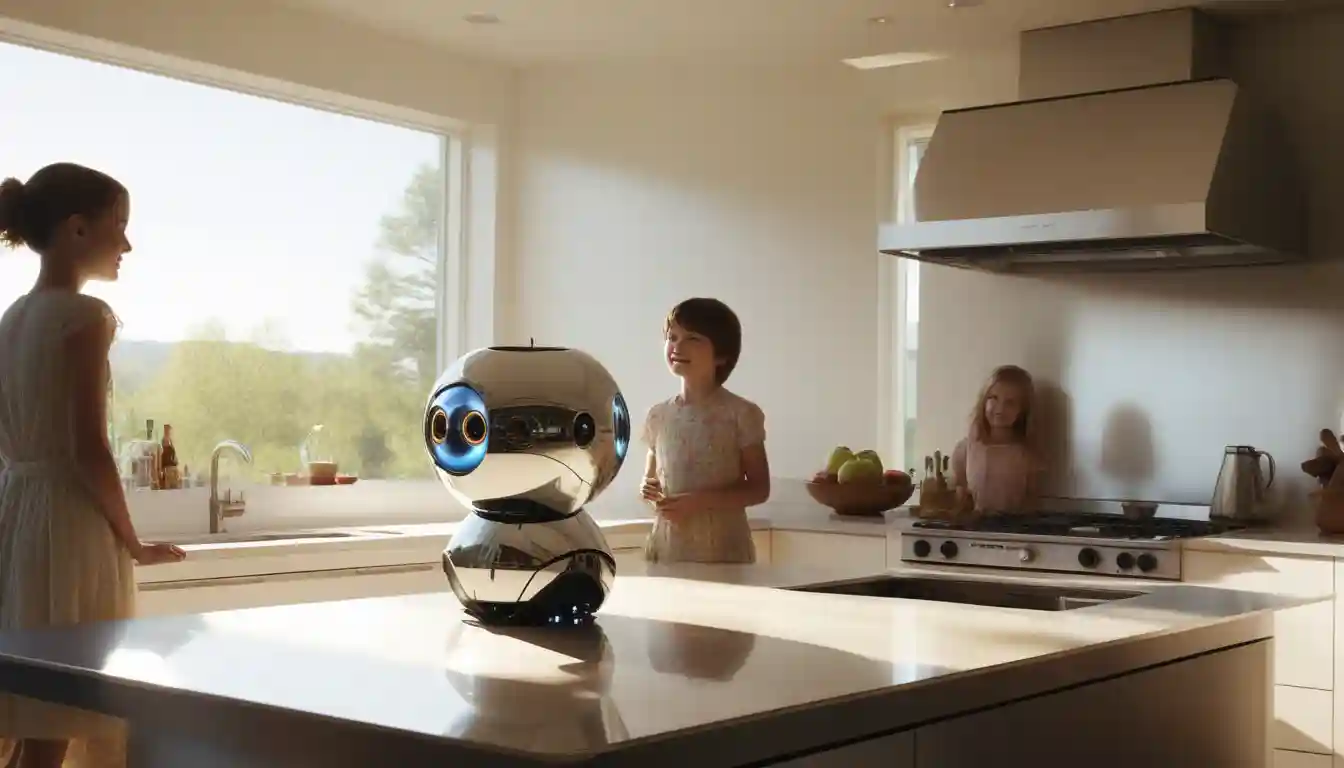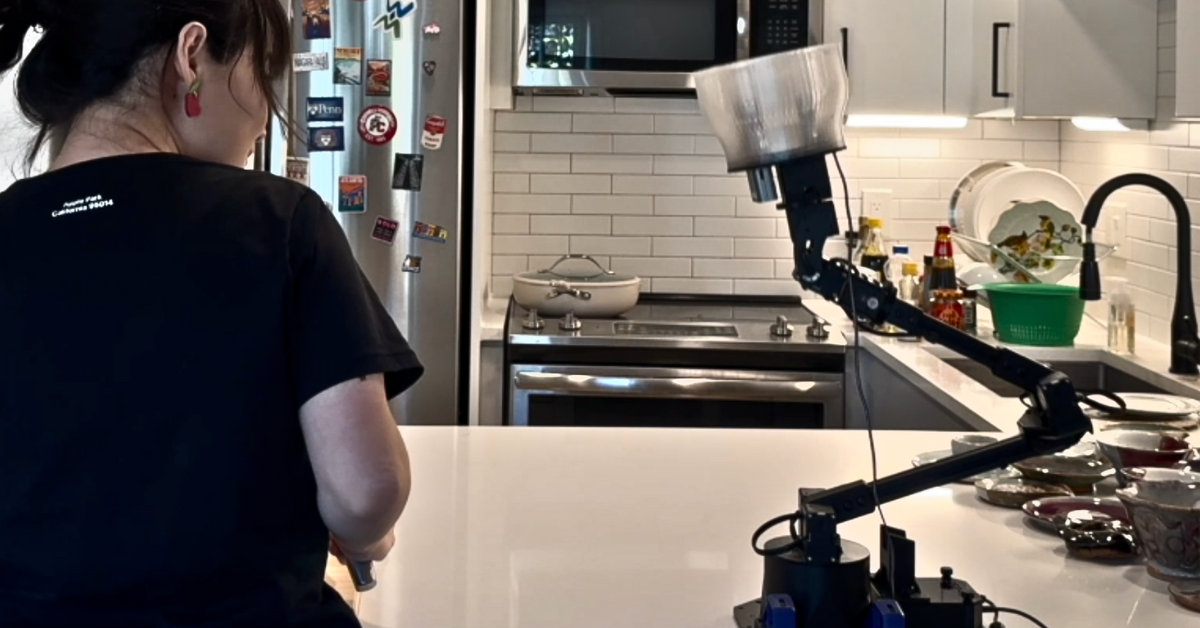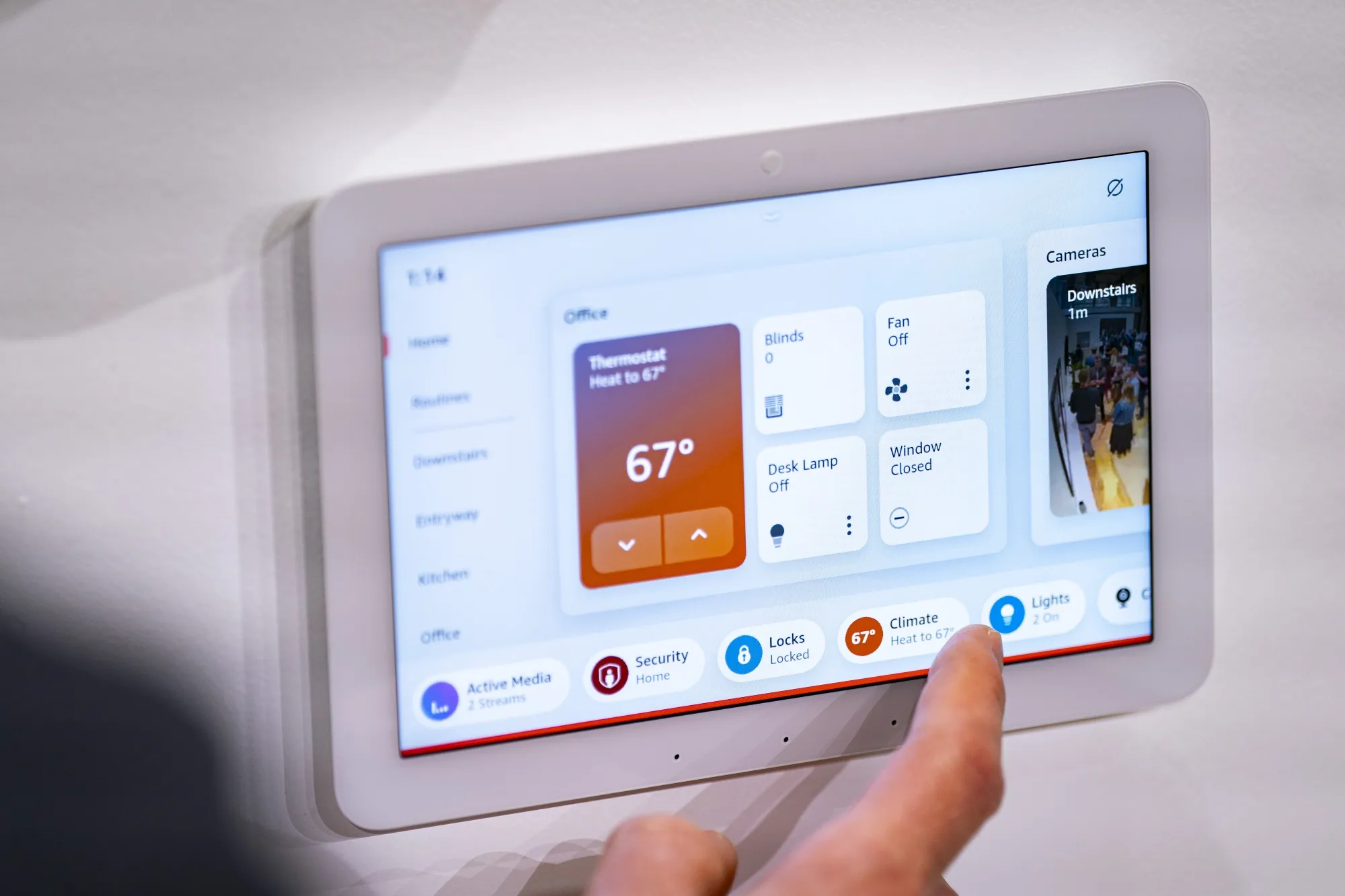
Apple Plans Four Smart Home Devices Including $1000 Desktop Robot According to New Leaks
Apple's Robotic Gambit: The $1,000 Bet on AI-Powered Homes
The tech giant's ambitious four-device strategy signals a fundamental shift in how Silicon Valley views the domestic sphere
CUPERTINO, California — The leaked internal codenames tell a story of unprecedented ambition: J595, J490, J450, T1333. Behind these alphanumeric designations lies Apple's most comprehensive hardware expansion since the iPhone's debut—a four-device ecosystem designed to fundamentally reshape how artificial intelligence operates within domestic spaces.

Multiple leaks reveal Apple is developing an interconnected smart home platform that extends far beyond incremental improvements to existing products. The initiative centers on a $1,000 interactive desktop robot expected as early as 2027, supported by a mid-tier smart display, next-generation security cameras, and industrial automation systems. Together, these devices represent a systematic attempt to capture the emerging market for ambient intelligence—a space where Amazon, Google, Samsung, and LG are simultaneously placing substantial bets.
Ambient Intelligence (AmI), often used interchangeably with ambient computing, describes environments that are sensitive and responsive to the presence of people. This technology seamlessly integrates smart devices, sensors, and artificial intelligence into our surroundings to anticipate needs and automate tasks without requiring direct commands.
Fact Sheet
| Product Name (Codename) | Expected Launch | Key Features | AI/Software | Price (Est.) | Competitive Context |
|---|---|---|---|---|---|
| Interactive Desktop Robot (J595) | 2027 | - Motorized arm with 7" display - Follows users around room - Advanced conversational Siri with "Bubbles" Memoji avatar - Real-time suggestions (meals, travel) | - "Linwood" Apple LLM - "Glenwood" third-party AI integration (e.g., Anthropic Claude) - "Charismatic" OS | ~$1,000 | Competes with Samsung Ballie (2025), LG AI Agent, Amazon Astro |
| Smart Display (J490) | Mid-2026 | - 6" wall-mounted display - FaceTime camera - Smart home hub (music, browsing, notes, appliance control) | - Facial recognition personalization - Voice-controlled widget interface - "Charismatic" OS (tvOS/watchOS-based) | $199-$299 | Competes with Nest Hub, Echo Show, Pixel Tablet hub |
| Security Cameras (J450) | 2026-2027 | - Facial recognition - Infrared sensors - Months-long battery life - Automated routines (lighting, music) | - Deep Apple Intelligence integration - Privacy-focused with Private Cloud Compute | Premium tier (exact TBD) | Competes with Nest, Ring, Eufy - Differentiates via privacy |
| Mobile Robot (T1333) | Long-term | - Wheeled with arm - Industrial/warehouse focus | - Automation of human tasks | N/A | Industrial automation play |
Core AI Upgrades:
- Linwood: Apple's proprietary LLM for Siri (nuanced language understanding)
- Glenwood: Hybrid framework supporting third-party models (e.g., Anthropic Claude)
- Led by Mike Rockwell (ex-Vision Pro)
The Anatomy of Domestic Disruption
The robotic vision extends far beyond novelty. Industry analysts describe Apple's strategy as a systematic assault on the home automation market, currently dominated by Amazon's Alexa ecosystem and Google's Nest platform. The four-device arsenal includes a mid-tier smart display launching in 2026, next-generation security cameras with months-long battery life, and industrial robots for warehouse applications.
"This isn't about catching up to competitors—it's about leapfrogging them entirely," noted one technology strategist familiar with the development timeline. "Apple is betting that consumers will accept premium pricing for genuinely intelligent home interaction."
The technological foundation rests on a complete overhaul of Siri, internally dubbed "Linwood," built on Apple's proprietary large language models. Simultaneously, the company is testing "Glenwood," an alternative framework incorporating third-party AI models, including Anthropic's Claude. This dual-track approach suggests Apple recognizes the execution risks inherent in its ambitious timeline.
A Large Language Model (LLM) is a type of artificial intelligence trained on vast amounts of text data to understand, summarize, and generate human-like language. By learning complex patterns from this data, these models can answer questions, translate languages, and create original content based on a given prompt or query.
Beyond the Echo Chamber
The competitive landscape has shifted dramatically since 2023. Samsung announced its Ballie rolling home robot for summer 2025 launch, while LG demonstrated its Smart Home AI Agent powered by Qualcomm's robotics silicon. Amazon continues marketing its niche Astro robot despite discontinuing the business version, and Google has integrated Gemini AI across its Home ecosystem.
"Every major platform recognizes that the next battleground is ambient intelligence in domestic spaces," explained a former Apple executive now working in venture capital. "The question isn't whether this market will emerge—it's who will define the user experience."
Apple's approach differs fundamentally in its privacy-centric positioning. The company's Private Cloud Compute infrastructure promises on-device processing for sensitive home data, a potential differentiator as consumers become increasingly wary of always-listening devices.
The Hardware Hierachy
The smart display, codenamed J490, serves as the ecosystem's practical anchor. Wall-mounted and roughly the size of two iPhones side-by-side, it runs a new operating system called "Charismatic," built on Apple TV and Watch software foundations. The device emphasizes voice control, widget-driven interfaces, and facial recognition for personalized content delivery.

The security cameras represent perhaps the most immediate profit opportunity. Battery-powered with facial recognition and infrared sensors, these devices promise to automate household routines—playing specific music for recognized users or adjusting lighting based on room occupancy. Supply chain sources indicate Apple views cameras as the stealth linchpin for broader ecosystem adoption.
The tabletop robot, however, embodies the greatest risk and potential reward. Its motorized arm carries a display that follows users around rooms, powered by a conversational Siri designed for natural interactions. Early prototypes feature a visual avatar called "Bubbles," employing Memoji-style graphics to humanize digital interactions.
Market Dynamics and Execution Hazards
The smart home camera market, valued at approximately $13 billion in 2024, is projected to reach $30-61 billion by 2030, representing high-teens annual growth rates. Apple's premium positioning could capture disproportionate value, particularly given the company's strength in affluent consumer segments.
Projected Growth of the Global Smart Home Camera Market (2024-2030)
| Metric | 2024 Market Size | 2030 Projected Market Size | Compound Annual Growth Rate (CAGR) |
|---|---|---|---|
| Forecast 1 | USD 9.98 Billion | USD 30.10 Billion | 20.7% (2025-2030) |
| Forecast 2 | USD 8.54 Billion (2023) | USD 29.20 Billion | 19.20% (2024-2030) |
| Forecast 3 | USD 9.26 Billion | USD 18.74 Billion | 12.46% (2025-2030) |
Yet execution risks are substantial. Social robots have historically struggled with consumer adoption—Amazon's discontinuation of Astro for Business serves as a cautionary tale. The robotic arm's success depends entirely on whether Apple's AI overhaul delivers reliably human-like interactions.
"If Siri isn't genuinely conversational by 2027, you're looking at a $1,000 servo demonstration," cautioned one industry analyst. "The table stakes are fast, grounded, multi-user control—otherwise a wall display plus cameras win on value proposition."
Mechatronic engineering is an interdisciplinary field that integrates mechanical engineering with electronics and computer control. This approach is fundamental to the design of smart, automated products, with modern robotics serving as a key example.
Supply chain intelligence suggests Foxconn subsidiary Hongzhun is involved in key component manufacturing for the robotic device, though mechanical yield and cost remain significant variables for the complex actuator systems required.
Investment Implications and Strategic Positioning
The initiative's financial impact may manifest less through hardware unit sales than through services attachment. Apple's iCloud+ storage tiers already limit HomeKit Secure Video to specific camera counts—unlimited cameras require the premium 2TB tier. Expanded camera adoption could drive meaningful iCloud+ revenue growth.
Market observers suggest focusing on near-term opportunities rather than speculative robotics plays. The smart display and camera portfolio offer clearer paths to profitability, while the robot serves as a premium halo product for brand differentiation.
"The real money is in cameras and services," noted one technology investor. "Battery cameras with on-device AI drive sticky automations and subscription upgrades—robots are a moonshot that may ship, but monetization will lag."
For suppliers, the initiative signals potential opportunities in mechatronics, camera modules, and integration services. However, initial volumes will likely remain modest until consumer acceptance patterns emerge.
The Broader Transformation
Apple's smart home push reflects deeper structural shifts in technology markets. Smartphone saturation has forced major platforms to seek new growth vectors, while the emergence of capable large language models has finally enabled the proactive, multi-modal assistants that previous generations promised but failed to deliver.
The cancellation of Apple's automotive project redirected significant engineering talent and capital toward AI and robotics initiatives. Industry sources describe this reallocation as accelerating development timelines across the smart home portfolio.
"We're witnessing the maturation of ambient computing," observed one former Apple engineer. "The question is whether Apple can execute on hardware complexity while delivering software reliability—both requirements for consumer trust in domestic AI."
Looking Forward
Apple's smart home strategy represents a calculated risk on two fronts: that consumers will accept premium pricing for genuinely intelligent home interaction, and that the company can execute complex mechatronics while delivering reliable AI software. Success requires threading a narrow needle between technological ambition and practical utility.
The initiative's true test will come not in launch events but in daily use. If Apple's redesigned Siri can deliver the natural, proactive assistance that previous smart home devices have promised but failed to provide, the premium pricing may prove justified. If not, even the most elegant hardware risks becoming an expensive reminder of AI's persistent limitations.
Investment Disclaimer: Market projections are based on current data and historical patterns. Past performance does not guarantee future results. Readers should consult financial advisors for personalized investment guidance.